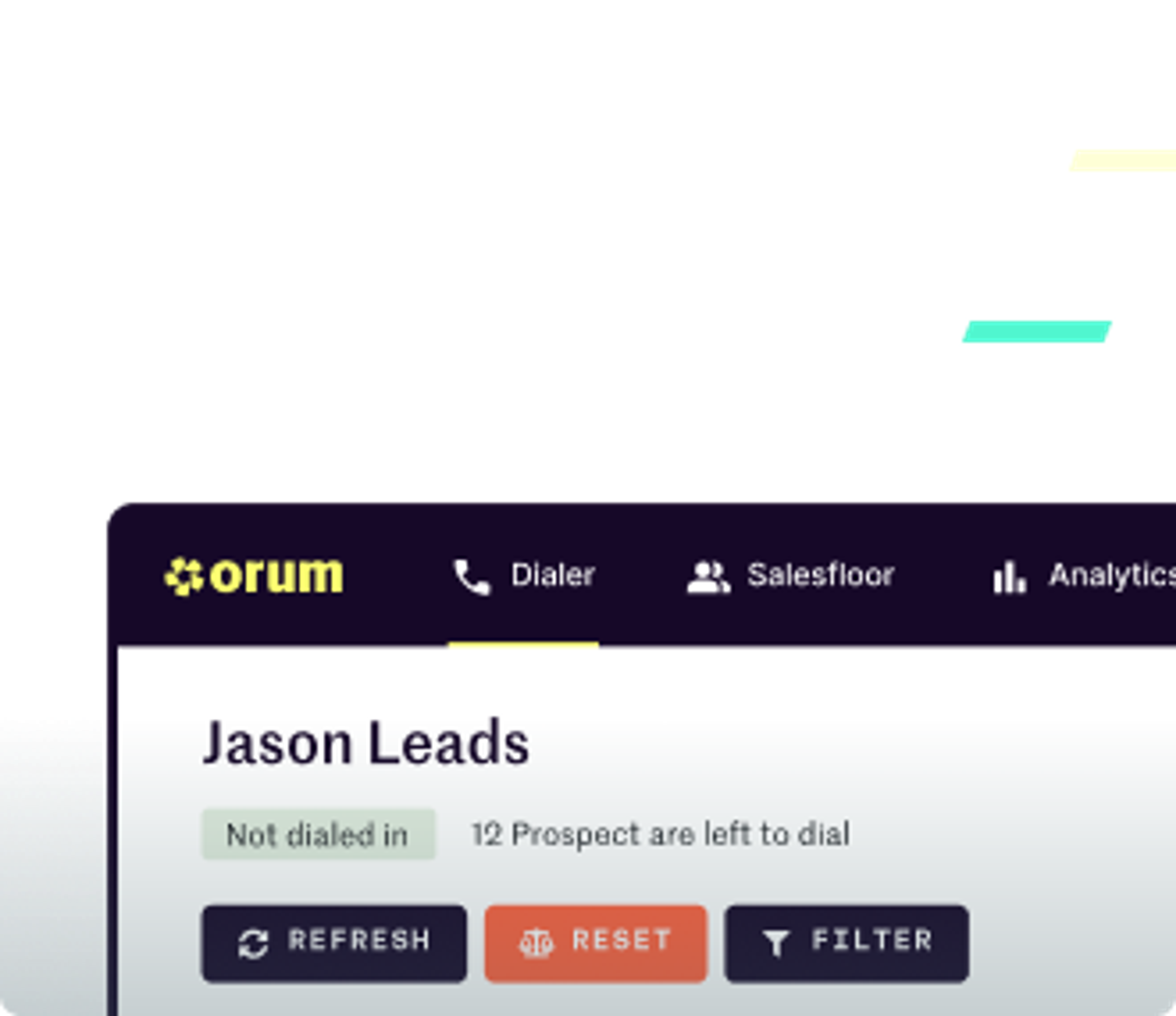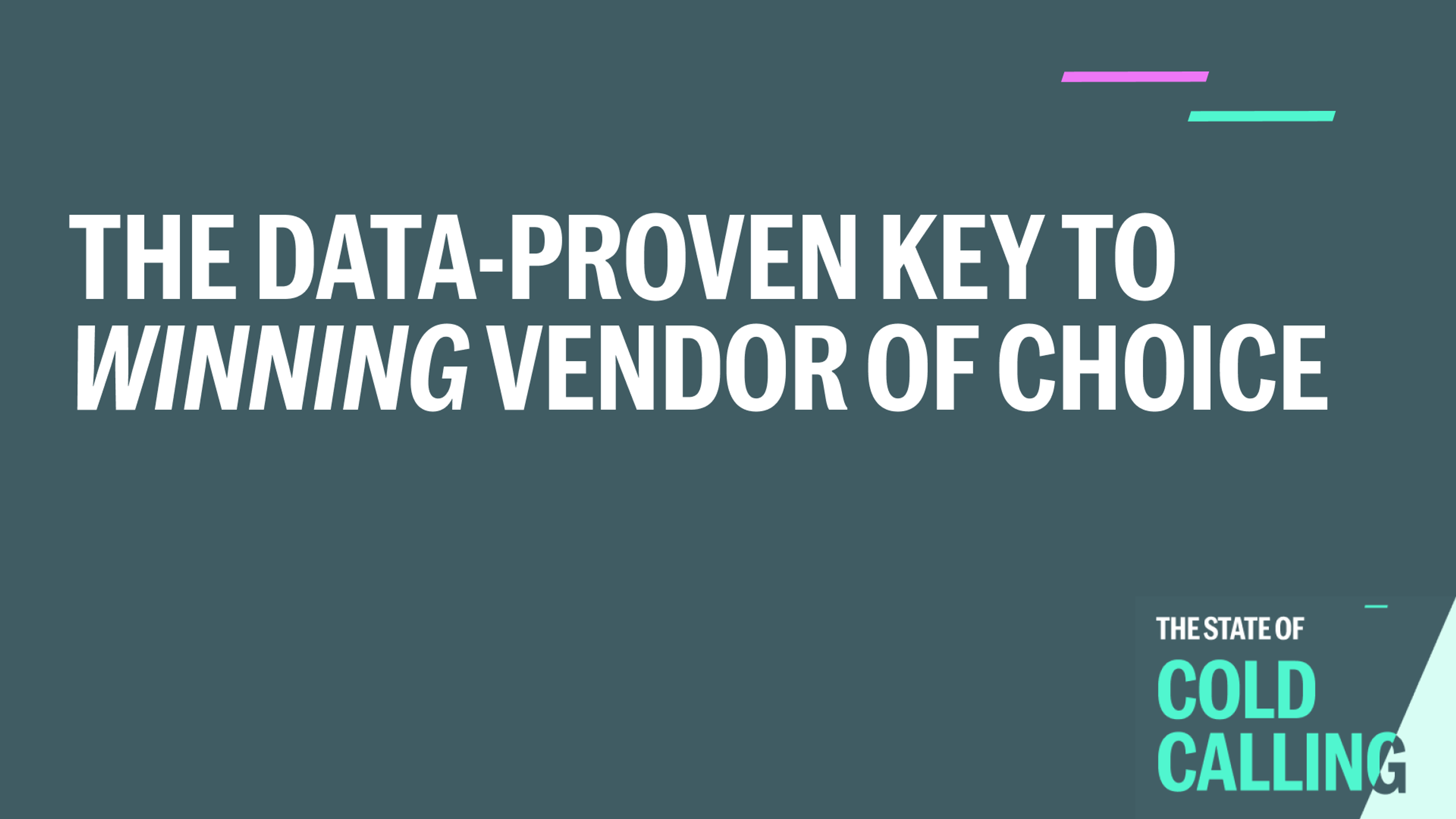The Purpose of Each Cold Call: A Data-Driven Guide to Multithreading


Cold calling has never been a one-size-fits-all game. If you have managed an SDR team, you know the purpose of a call changes dramatically depending on who picks up. The State of Cold Calling report, built on the analysis of one billion outbound dials, shows us that connect rates, talk times, and meetings booked vary by persona and seniority. That doesn’t mean your reps shouldn’t be calling every seniority level. Rather, you need a strategy specific to each person you’re dialing.
Download the State of Cold Calling report today
The takeaway is straightforward: each cold call serves a distinct purpose. Recognizing what that purpose is unlocks how sellers build multithreading strategies that win accounts faster.
Why the Purpose of a Cold Call Matters
The data shows:
- Individual Contributors pick up frequently, averaging 5.3 percent connect rates, with Sales ICs hitting as high as 7.6 percent.
- Managers are also highly reachable, with a 4.9 percent connect rate, but they do not book as many meetings.
- VPs are the hardest to reach at 3.8 percent.
- C-suite leaders are surprisingly accessible at 4.0 percent, especially in Admin and Finance.
This variation means that a call to an IC should not have the same goal as a call to a C-suite executive or VP, especially in terms of understanding who will ultimately be part of the decision-making process.
When you layer in time-of-day pickup windows, like early mornings for IT Managers or midday for Sales ICs, you can begin engineering a true multithreaded approach.
Persona and Seniority: The Real Purpose of Each Call
Individual Contributors (ICs) → Fact Finding and Referrals
- Why: Highest connect rates. They live the day-to-day pain and know who makes decisions.
- Purpose: Identify the real blockers, gather language that can be echoed up the chain, and secure a referral.
- Tactic: “Sounds like you’re hands-on with [pain point]. Who on your team owns the strategy for fixing it?”
Managers → Talk Time and Proof Gathering
- Why: Managers answer often, such as Admin Managers at 8.1 percent and IT Managers at 4.0 percent, but meeting rates lag behind.
- Purpose: Extend talk time, validate challenges, and gather proof points.
- Tactic: Call early mornings between 8 and 10 AM when they are prepping for the day. Ask for metrics: “If this were solved, how much time would your team save weekly?”
Directors → Opportunity Qualification
- Why: Directors connect at solid rates, like Sales Directors at 6.1 percent and Admin Directors at 6.6 percent. They influence strategy but are not always final signers.
- Purpose: Qualify the account’s readiness and identify internal champions.
- Tactic: Afternoon blocks between 2 and 4 PM can work for Engineering or Operations. Pitch in terms of efficiency gains or team-wide outcomes.
VPs → Decision Influence
- Why: The lowest connection rate at 3.8 percent. They are the hardest to catch, but high leverage if you do.
- Purpose: Get their buy-in by bringing insights from ICs and Managers. Show that you have done your homework.
- Tactic: Call just before the hour or during the lunch window. Lead with: “We’ve been talking with your Managers and ICs who flagged [X issue]. Is that a priority at your level?”
C-suite → Strategic Alignment
- Why: Surprisingly reachable, like Finance C-suite at 4.5 percent and Admin C-suite at 6.6 percent. They do not want details; they want vision.
- Purpose: Align on strategic value so the rest of the org knows the conversation is worth having. This creates cover for Directors and VPs to engage.
- Tactic: Use Power dialing for precision and presence. Hook with peer proof: “We’re helping executives at [similar companies] solve [high-level outcome]. Should we bring your VP into a session to explore this?”
Multithreading in Action: A Strategic Sequence
Multithreading is not about climbing a ladder of seniority. It is about sequencing conversations in a way that builds credibility and momentum. The purpose of each call shifts depending on your current stage in the account.
Start with ICs
- Goal: Fact-finding and referrals.
- Action: Use their high connect rates to uncover real pain and identify who else needs to be involved.
Talk track:
- Opener: “I work with teams like yours that spend a lot of time on [specific task]. Curious, how are you handling that today?”
- Follow-up: “Sounds like that eats up a lot of time. Who on your team owns the bigger-picture strategy around fixing it?”
- CTA: Referral to Manager or Director.
Bring in the C-suite early
- Goal: Strategic alignment.
- Action: Share what ICs are experiencing and position the challenge as a business-level issue. When executives nod to the importance of solving it, doors open at every level.
Talk track:
- Opener: “I’ve been speaking with your team and hearing consistent challenges with [X]. At your level, the conversations usually focus on [efficiency, risk, revenue impact]. Does that resonate?”
- Follow-up: “Executives I work with see this as more than a tactical fix—it’s a way to [improve pipeline, reduce costs, mitigate risk]. Do you see it the same way?”
- CTA: Suggest involving VPs or Directors in a deeper session: “Would it make sense to pull in [VP/Director] so we can map out how this would work for your org?”
2. Work with Managers
- Goal: Proof gathering.
- Action: Validate impact with data. Managers provide numbers that strengthen the business case and show how the problem plays out on the ground.
Talk track:
- Opener: “Your team is on the front line with [pain point]. How much time or effort does this cost each week?”
- Follow-up: “If you had [X solution], what would that free your team to focus on?”
- CTA: Feed proof points upward: “If I share that with leadership, would you be open to confirming the numbers on a quick follow-up?”
3. Loop in Directors
- Goal: Opportunity qualification.
- Action: With executive alignment and manager-level proof, Directors can confirm organizational readiness and identify blockers. They become the bridge between strategy and execution.
Talk track:
- Opener: “From your vantage point, is solving [problem] on the radar for this quarter?”
- Follow-up: “When new tools are introduced, what are the biggest hurdles—budget, process, or adoption?”
- CTA: “It sounds like this could be impactful. Should we pull together a session with your VP to talk through how this fits into your priorities?”
Influence VPs
- Goal: Meeting conversion.
- Action: Present the full picture. ICs and Managers highlight the problem, C-suite provides cover, and Directors show feasibility. The VP call is where you move from exploration to securing time on the calendar.
Talk track:
- Opener: “I’ve been speaking with your ICs and Managers—they flagged [pain]. Directors confirmed it is a priority. From your perspective, how big of an issue is this?”
- Follow-up: “Other VPs I work with see this as a chance to [accelerate pipeline, reduce costs, scale more efficiently]. Would that be relevant for your org?”
- CTA: “Let’s schedule 20 minutes with you and your team to walk through the numbers and outcomes. Does [day/time] work?”
This sequence reflects what the data shows: ICs are your entry point, C-suite sets tone earlier than many teams expect, Managers and Directors supply the evidence, and VPs close the loop with decision influence. When SDRs understand the true purpose of each cold call, every conversation becomes part of a coordinated account strategy.





